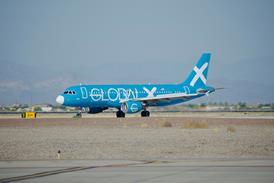Chris Jasper/PARIS
When French president Jacques Chirac opened the Paris air show on 12 June, it was on a wave of growing European optimism. The day before, the Spanish state holding company SEPI had announced its choice of Germany's DaimlerChrysler Aerospace (Dasa) to merge with nationally-owned airframer CASA, marking what DaimlerChrysler chairman Jurgen Schrempp termed "the first major cross-border business combination in the European aerospace industry".
That enthusiasm for the Dasa-CASA deal built further during the show, and the new impetus that it gave to consolidation was perhaps the most important single trend to emerge at this year's Paris event.
And not only did those one-step removed from the action talk up the positive aspects of the merger: even British Aerospace (BAe) and Aerospatiale Matra, both of which had bid for CASA, reacted favourably. The general consensus was that the deal could only advance the cause of further integration - although on which fronts, and how rapidly, remained a topic for lively debate.
As the dust settles over Le Bourget, the initial optimism inspired by the merger announcement may be tempered somewhat, but the overall impression of a process once again in motion still endures. However, while the forum provided by Paris encouraged aerospace chiefs into unusual candour, their pronouncements were not completely positive from the point of view of further consolidation.
The reconstitution of Airbus as a single company, it is true, seems at last to be an attainable goal, with BAe keen to merge its own Airbus operation with either Aerospatiale Airbus or Dasa-CASA Airbus, reducing the number of players left in the consortium to two. Against the Paris backdrop, the European companies also spoke with new concern about a Boeing recovery, and voiced worries over their ability to combat the Seattle threat should Airbus remain a loose consortium.
Europe's politicians reinforced these concerns at a Paris meeting, and at last added bite to their demands for Airbus restructuring by agreeing a tentative link between that and research/launch funding for the A3XX project - a move in line with Flight International's recent call for ministerial action (9-15 June).
Transatlantic options
Yet while it provided evidence of progress on the Airbus front, Paris also served to reinforce the dawning realisation that a single European Aerospace and Defence Company (EADC) may never materialise. BAe says it no longer favours a full meltdown of the European industry, and is now equally interested in pursuing transatlantic options, while Aerospatiale Matra and Dasa have made similar noises.
Ratings agency Moody's Investor Service now believes the most likely outcome of European consolidation is the formation of two or three major groups, rather than a pan-European entity, although it is also sceptical about the prospects for "significant transatlantic alliances".
Moody's analyst Tassos Philippakos says Europe's moves so far amount to "a phase before the real work of major cross-border mergers begins", although he implies that the continent's manufacturers have different motivations for consolidating, and that some risk taking their eye off the ultimate goal of securing greater competitiveness through cost-savings.
"We are concerned that the integration of different product lines is not doing enough to shrink overcapacity, which is the real problem facing the industry," he warns.
Tassos points to ongoing talks on the consolidation of the European missiles industry as the sort of initiative that could deliver "effective synergies and savings". BAe and the former Lagardère Matra formed the Matra BAe Dynamics missiles joint venture as long ago as 1996, and following its purchase of Marconi Electronic Systems, the UK giant is planning to fold Alenia Marconi Systems into the same operation, with Matra bringing in the missiles business of Aerospatiale.
Marconi's joint venture partner, Finmeccanica Alenia, is reluctant to follow this path however, and Tassos warns that "if this arrangement finally settles into a multinational joint venture or partnership, political pressures may obstruct necessary capacity efficiencies or staff reductions."
If one other major industrial trend was on full display at Le Bourget, it was the degree of consolidation that has already taken place at the second tier level in the USA. With a host of US aerospace suppliers proudly displaying their new mates, Europe's half-hearted attempts to attain critical mass merely at primary producer level were put starkly into perspective.
Source: Flight International























